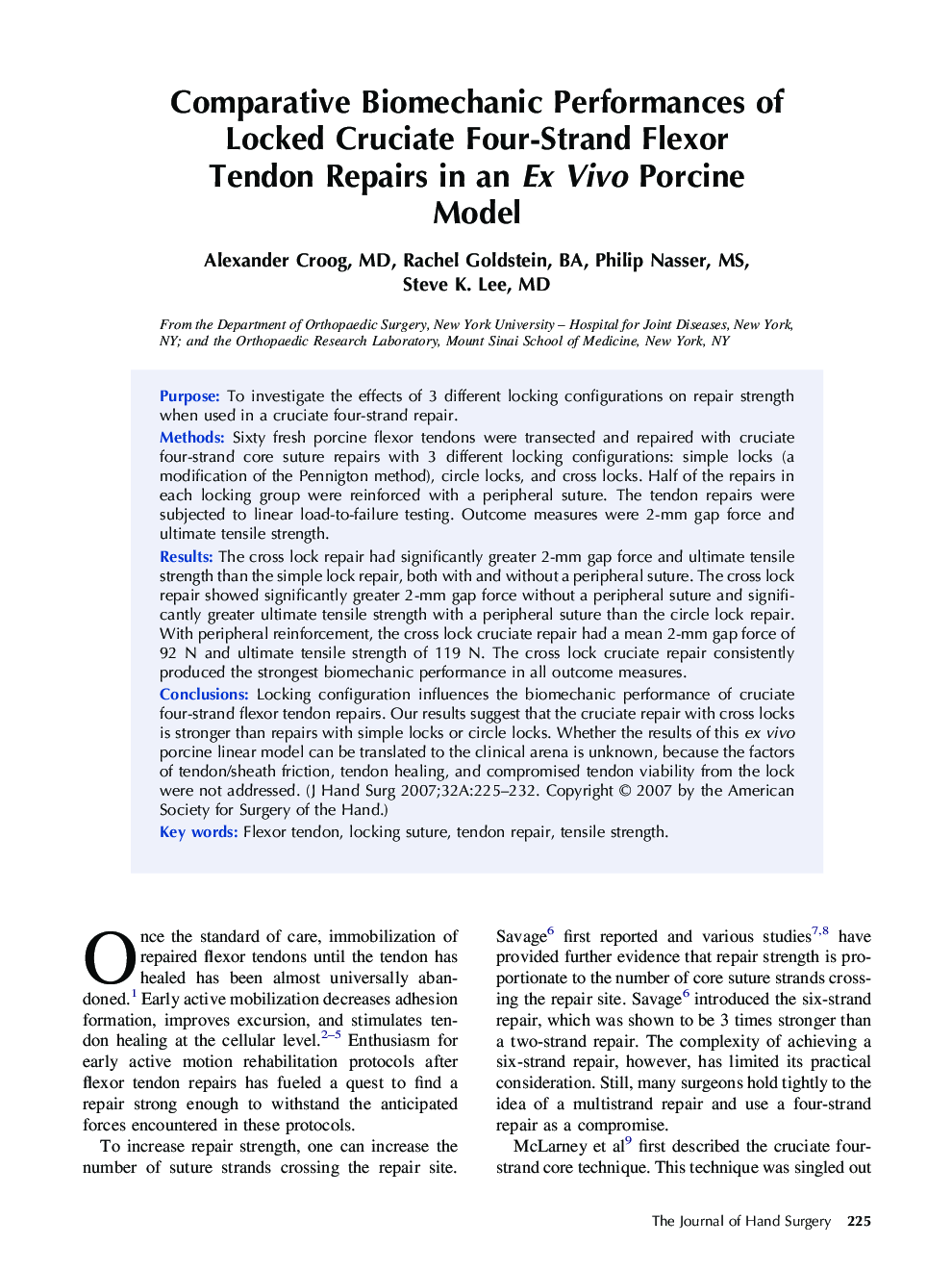| Article ID | Journal | Published Year | Pages | File Type |
|---|---|---|---|---|
| 4071559 | The Journal of Hand Surgery | 2007 | 8 Pages |
PurposeTo investigate the effects of 3 different locking configurations on repair strength when used in a cruciate four-strand repair.MethodsSixty fresh porcine flexor tendons were transected and repaired with cruciate four-strand core suture repairs with 3 different locking configurations: simple locks (a modification of the Pennigton method), circle locks, and cross locks. Half of the repairs in each locking group were reinforced with a peripheral suture. The tendon repairs were subjected to linear load-to-failure testing. Outcome measures were 2-mm gap force and ultimate tensile strength.ResultsThe cross lock repair had significantly greater 2-mm gap force and ultimate tensile strength than the simple lock repair, both with and without a peripheral suture. The cross lock repair showed significantly greater 2-mm gap force without a peripheral suture and significantly greater ultimate tensile strength with a peripheral suture than the circle lock repair. With peripheral reinforcement, the cross lock cruciate repair had a mean 2-mm gap force of 92 N and ultimate tensile strength of 119 N. The cross lock cruciate repair consistently produced the strongest biomechanic performance in all outcome measures.ConclusionsLocking configuration influences the biomechanic performance of cruciate four-strand flexor tendon repairs. Our results suggest that the cruciate repair with cross locks is stronger than repairs with simple locks or circle locks. Whether the results of this ex vivo porcine linear model can be translated to the clinical arena is unknown, because the factors of tendon/sheath friction, tendon healing, and compromised tendon viability from the lock were not addressed.
